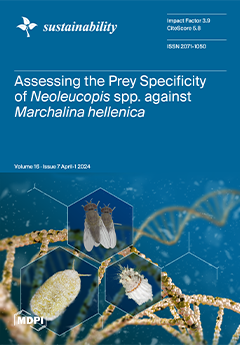Aerosol samples (PM
2.5) were collected in Xi’an (XN) from 11 August to 11 September 2021 and in Qinling (QL) from 14 July to 24 August 2021, respectively. In addition, ozone (O
3) data were collected in order to investigate the characteristics and source areas of PM
2.5 and O
3 in the Guanzhong Basin (GB). The concentrations of PM
2.5, organic carbon (OC), and elemental carbon (EC) in XN (53.40 ± 17.42, 4.61 ± 2.41, and 0.78 ± 0.60 μg m
−3, respectively) were higher than those in QL (27.57 ± 8.27, 4.23 ± 1.37, and 0.67 ± 0.53 μg m
−3, respectively) in summer. Total water-soluble ions (TWSIIs) accounted for 19.40% and 39.37% of the PM
2.5 concentrations in XN and QL, respectively. O
3 concentrations in summer were 102.44 ± 35.08 μg m
−3 and 47.95 ± 21.63 μg m
−3 in XN and QL, respectively, and they showed a significant correlation with O
x. The positive matrix factorization (PMF) model identified three main sources in XN and QL, including coal combustion source (COB), secondary aerosol (SA), and dust sources (DUSs). The potential source contribution function (PSCF) and a concentration weight trajectory (CWT) model with back-trajectory analysis showed that Inner Mongolia, the interior of Shaanxi, and nearby areas to the southwest were the sources and source areas of carbonaceous matter in XN and QL. The results of this study can contribute to the development of prevention and control policies and guidelines for PM
2.5 and O
3 in the GB. Furthermore, long-term and sustainable measuring and monitoring of PM
2.5 and O
3 are necessary, which is of great significance for studying climate change and the sustainable development of the environment.
Full article





